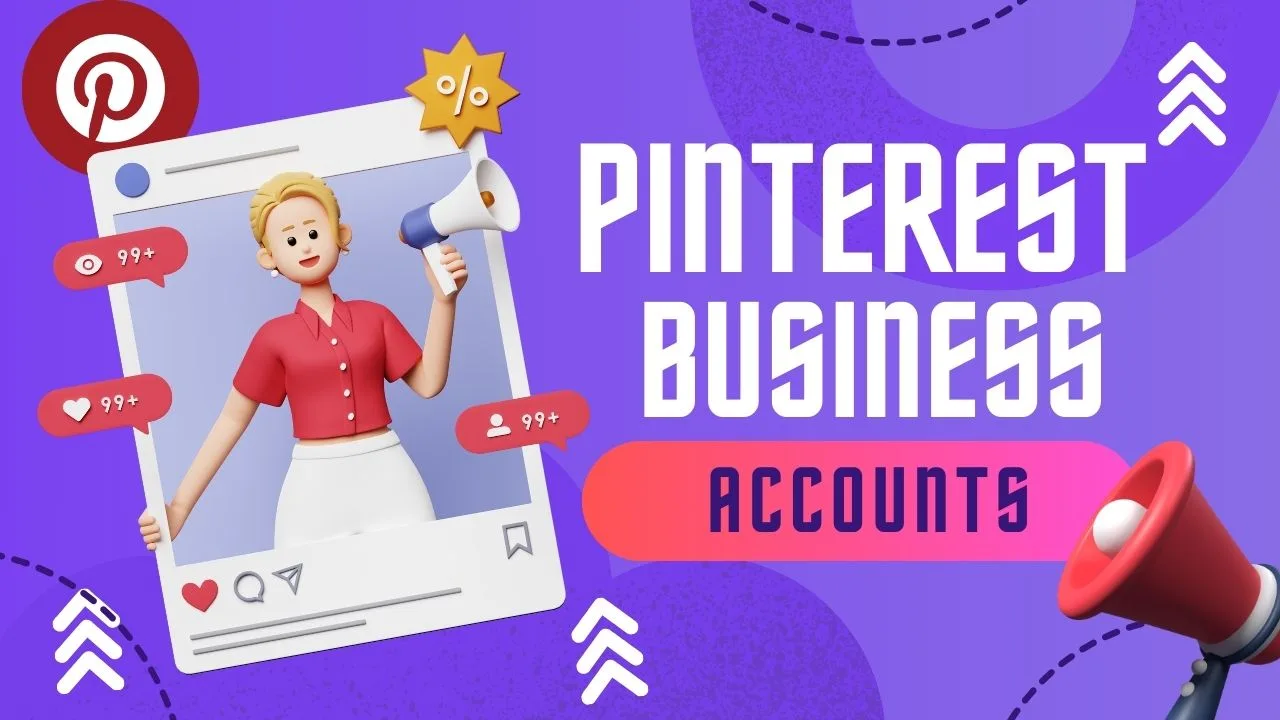Unlocking the Power of Pinterest for Your Business: A Comprehensive Guide
In the ever-evolving digital marketing landscape, trendy Pinterest has emerged as a powerful platform for businesses looking to boost their online presence, drive traffic, and increase sales. Often underrated compared to social media giants like Facebook and Instagram, Pinterest offers unique advantages that can significantly impact your business strategy. This comprehensive guide will delve into everything you need to know about leveraging Pinterest for your business, covering key aspects and providing actionable tips.
What is Pinterest Business?
Pinterest Business refers to using Pinterest, a visual discovery and bookmarking platform, to promote and grow your business. Unlike personal Pinterest accounts, a Pinterest Business account provides access to tools and features designed to help businesses reach their target audience, analyze performance, and optimize their marketing efforts.
5 Important Key Features of Your Pinterest Business Accounts:
- Pinterest Analytics: Gain insights into how your pins are performing, including metrics such as impressions, saves, and clicks.
- Rich Pins: Enhanced pins that provide more information directly on the pin, such as product details, recipes, or articles.
- Pinterest Ads: Create promoted pins to reach a wider audience and drive targeted traffic to your website.
- Shop the Look Pins: Allow users to shop directly from your pins by tagging products within your images.
- Verified Merchant Program: Build trust with potential customers by displaying a blue checkmark on your profile.
Setting Up Your Pinterest Business Account:
Step 1: Create a Business Account
If you already have a personal Pinterest account, you can easily convert it to a business account. Alternatively, you can create a new business account from scratch. To do this, visit the Pinterest for Business page and follow the instructions to set up your profi
Step 2: Optimize Your Profile
Your profile is the first impression potential customers will have of your business on Pinterest. Make sure to:
- Choose a Professional Profile Picture: Use your logo or a high-quality image that represents your brand.
- Craft a Compelling Bio: Clearly describe what your business does and include relevant keywords to improve searchability.
- Add Your Website URL: Drive traffic to your website by including a clickable link in your profile.
Step 3: Claim Your Website
Claiming your website on Pinterest allows you to access additional analytics and features. To do this, go to your account settings, find the “Claim” section, and follow the instructions to verify your website.
Creating Engaging Content for Pinterest:
Understanding Your Audience:
Before you start pinning, it’s crucial to understand who your target audience is and what type of content resonates with them. Use Pinterest Analytics and other market research tools to gather insights about your audience’s demographics, interests, and behavior.
Content Types to Consider:
- Infographics: Visually appealing and informative, infographics are highly shareable and can help establish your expertise.
- How-To Guides and Tutorials: Step-by-step guides or tutorials can attract users looking for solutions or inspiration.
- Product Pins: Showcase your products with high-quality images and detailed descriptions.
- Lifestyle Images: Create aspirational content that shows your products or services in use.
- Videos: Leverage Pinterest’s video pin feature to engage users with dynamic content.
Best Practices for Pin Design:
- Use High-Quality Images: Ensure your images are clear, well-lit, and visually appealing.
- Vertical Orientation: Pins are displayed vertically on Pinterest, so use a 2:3 aspect ratio (e.g., 1000 x 1500 pixels).
- Add Text Overlays: Use text overlays to convey key messages and make your pins more informative.
- Consistent Branding: Incorporate your brand’s colors, fonts, and logo to create a cohesive look.
- SEO-Friendly Descriptions: Write clear, keyword-rich descriptions to improve the discoverability of your pins.

Leveraging Pinterest SEO:
Pinterest is often described as a visual search engine, making SEO a critical component of your Pinterest strategy. Here are some tips to optimize your Pinterest presence for search:
Keyword Research:
Conduct keyword research to identify relevant terms and phrases your target audience is searching for. Use tools like Pinterest’s search bar, Google Keyword Planner, and other SEO tools to find popular and relevant keywords.
Optimize Your Boards:
- Board Titles and Descriptions**: Use descriptive and keyword-rich titles and descriptions for your boards.
- Categorize Boards**: Assign appropriate categories to your boards to help Pinterest understand your content.
- Pin Descriptions:Write detailed and keyword-optimized descriptions for each pin. Include relevant hashtags and a call to action to encourage engagement.
Use Alt Text:
Pinterest allows you to add alt text to your images, which helps with accessibility and SEO. Write concise and descriptive alt text for each image.
Promoting Your Pinterest Business Account:
Cross-promote on Other Channels:
Leverage your other social media platforms, email newsletters, and website to promote your Pinterest account. Include Pinterest buttons on your website to make it easy for visitors to follow you and share your content.
Collaborate with Influencers:
Partnering with influencers in your niche can help you reach a larger audience. Look for influencers who align with your brand values and have a significant following on Pinterest.
Run Pinterest Ads:
Pinterest Ads can help you reach a targeted audience and drive traffic to your website. Experiment with different ad formats, such as Promoted Pins, Promoted Video Pins, and Shopping Ads, to see what works best for your business.
Analyzing and Adjusting Your Strategy:
Monitor Pinterest Analytics:
Regularly check your Pinterest Analytics to track the performance of your pins and boards. Pay attention to metrics such as impressions, saves, clicks, and engagement rate.
Identify Top-Performing Content:
Identify which pins and boards are performing the best and analyze why they are successful. Use these insights to inform your future content strategy.
Adjust Your Strategy:
Based on your analytics, make adjustments to your strategy. Experiment with different types of content, posting times, and keywords to see what resonates most with your audience.
Pinterest Business Success Stories:
Case Study 1: The Home Decor Brand
A home decor brand used Pinterest to showcase their products in styled room settings. By creating high-quality images and infographics about interior design tips, they attracted a large following and significantly increased their website traffic. Their strategy included regular pinning, participating in group boards, and running targeted ads. As a result, they saw a 40% increase in sales within six months.
Case Study 2: The Fashion Retailer
A fashion retailer leveraged Pinterest’s Shop the Look Pins to make it easy for users to purchase outfits directly from their pins. They also collaborated with fashion influencers to reach a broader audience. By consistently posting new content and engaging with their followers, they grew their Pinterest presence and boosted their online sales by 50%.
Conclusion:
Pinterest Business offers a unique opportunity for businesses to connect with their target audience, drive traffic, and increase sales. By setting up a Pinterest Business account, creating engaging content, optimizing for SEO, and promoting your account, you can unlock the full potential of this visual platform. Regularly analyzing your performance and adjusting your strategy will ensure you stay ahead of the competition and continue to grow your business on Pinterest.
Embrace the power of Pinterest Business today, and watch as your brand flourishes in the world of visual discovery and inspiration.
